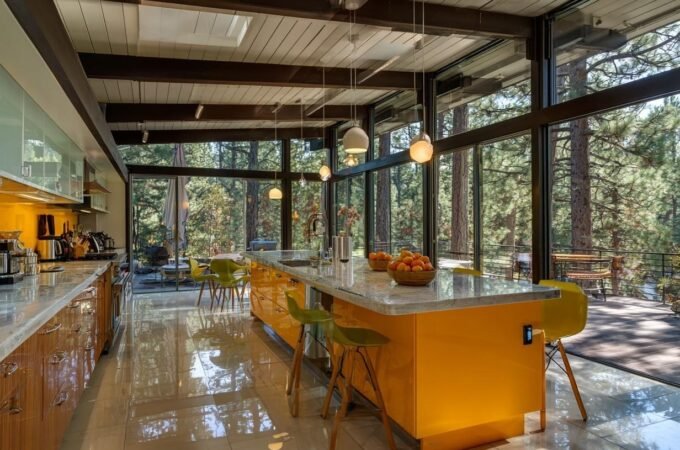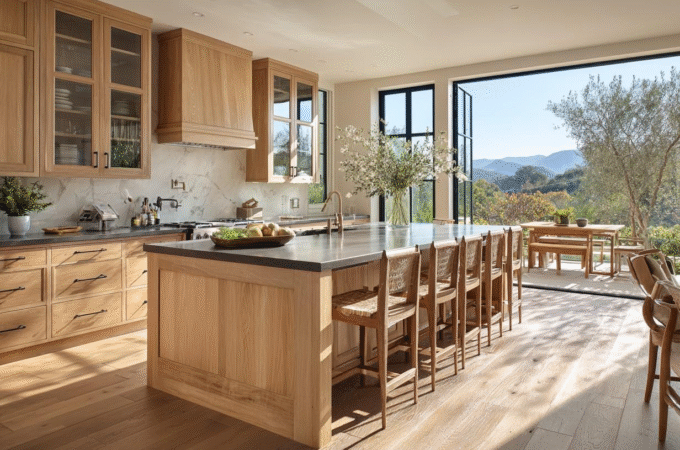
Does the Hue of Your Home Have an Overall Impact on Your Mood?
If you’ve ever walked into a house and immediately felt less stressed and calmed, it probably has something to do with color on the walls. That’s right; the interior paint color does more than making our homes look nice; it can also affect our moods. While every color comes in literally hundreds of shades and tones, here are some ways specific colors affect the human psyche.
Yellow:

Everyone knows yellow is a bright, cheery color. And in a house, yellow is fantastic for kitchens. It is a color associated with energy, vigor, and happiness and what better feeling to experience in a kitchen with delicious meals. Most people wake up, get dressed, and head right for the kitchen to grab that cup of coffee or tea they need to jump-start the day. Yellow tones also give up a similar emotionally uplifting buzz. It is a color of joy and happiness, and one that experts agree goes great in a kitchen.
Red:
How does the color red make you feel? Indeed, it encompasses strong emotions. Intense and energetic at the same time.
The color red is many times used by food chains, restaurants, and logos for brandings, so there is a strong association with food as well. So it is inevitable that excitement levels can relate to our moods and create lasting impressions. The same color is famous during valentine season and the lovey-dovey heart-shaped balloons. When it comes to our homes, the color can be a nice contrast for rugs, curtains, and cushions tagged in a unique blend with light colors. However, it is not an ideal color for your bedroom where you would prefer to doze off as the color is said to increase the respiratory rate is some cases.
White:
Most people don’t realize that white is not just white. White paint comes in hundreds of subtly different shades. Remember that white reflects light and so in it is the presence of all colors. White tends to symbolize purity and wholeness or innocence.
Think of the American bride wearing white as a symbol of purity. In a home, white walls can make a space seem bigger or airy. If you are thinking about painting your walls a fresh, clean white shade, the best rooms are the kitchen or bathroom. You can even be dramatic with white by using decorative accents that range through all the nuances of white. If your walls are white, consider more colorful, vibrant made to measure curtains to offset the white. White gives your house guests a feeling of a fresh start, of a cleansing breath, and that can be very enjoyable. Just remember that white is hard to keep clean and looks best when paired with a contrast color.
Blue:

If there’s one color, people feel comfortable spreading across their walls is blue. The effects of blue on the psyche are well known. It’s a color that brings down the blood pressure and heart rate. It’s the very reason its recommended for bedrooms and bathrooms. But remember that a very light blue can appear chilly and cold. You don’t want to feel this way in your home, so if you’re going with an icy blue, remember to pair it with warm-toned décor. Dark blue can have the opposite effect of cheering, and it does make people feel just what the word implies, “blue” or sad in spirit.
Black:
Black isn’t the absence, but a combination of all colors. Many of our home appliances, electrical gadgets, phones, and stationery consist of black as a prominent feature. The color holds a powerful vibe and goes with almost every other color. Black curtains, drapes and rugs and comes with a ton of shades and can be paired up like a pro with great contrasts of grey and whites. Imagine, if it weren’t for the darker shades, the bright ones would never shine!
Green:
The psychological effects of room colors are plenty and adding bright green color to your workplace, or home symbolizes fortune and helps to reduce mild to moderate levels of anxiety.
Undoubtedly it is a soothing color, which helps the mind to focus, compose, and feel the serenity at the same time. The color lime green is also opted by the World Health Organization to represent as a symbol for mental health and its awareness.

In some cultures, it signifies luck, and for some, it is associated with religious beliefs as well, and also it is thought to relieve stress and help heal.
Its calming effects may be due to its associations with nature, which people often feel is relaxing and refreshing at the same time. For some people who the outdoors, it also gives them a natural feel.
The blog featured some primary colors which are most commonly available to be used as internal as well as external options with a focus on the effects of their visibility and our moods. The color is an incredible way to evoke or diminish a psychological or emotional experience. When you are decorating, consider what you want people to feel in that space. There’s most certainly a color out there that will fit your needs.




